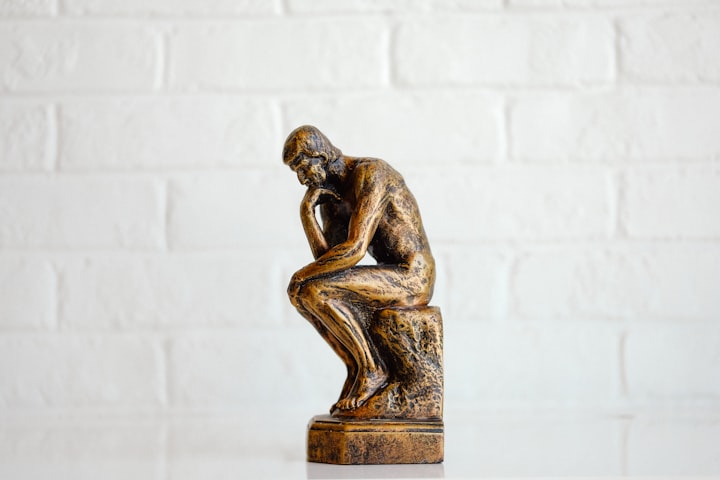Why do we get attached to others?
Attachment Theory Dissected

Attachment is defined as “a strong emotional bond.” However, if we go deeper, we can find two types of attachment, secure and insecure. To feel attached (securely) is to feel secure and safe. Someone insecurely attached experiences dependency, fear of rejection, vigilance, and anxiety.
As Jeremy Holmes’s book (John Bowlby and Attachment Theory) says, this is, in essence, a spatial theory (related to physical or mental space). When a person is close to their loved one, they feel good and secure. When they are not, they feel anxious, sad, alone, or scared (maybe everything at the same time).
“It is, via the achievement of proximity, a relaxed state in which one can begin to ‘get on with things’, pursue one’s projects, to explore.” – Jeremy Holmes.
Attachment styles are developed very early in childhood, according to attachment theory. We are affected by them in our adulthood, and they last for our whole lives.
Your attachment style determines how your relationships are gonna play out in adulthood, your perception about the world, i.e., if it is a hostile place or a safe place, and, therefore, how you act in it.
Where did the attachment theory come from?
The British psychoanalyst John Bowlby (1907-1990) developed this theory due to his studies about maternal care and mental health made on behalf of the WHO (World Health Organisation). You can download and read the reports here if interested.
Why is Attachment Theory Important?
Your attachment style determines the kind of relationships you have with other people, who you are attracted to, who you attract, and even how you perceive the world around you.
Inner Working Models
You are probably wondering how the way you get attached to others affects your perception. The insecurely attached person sees the world as a dangerous place and sees other people as untrustworthy, distancing from them and avoiding getting close to anyone.
Someone with an anxious or avoidant attachment style may struggle to maintain healthy relationships with people. The avoidant type may get anxious when they perceive some distance in the relationship, which causes them to react in distancing even more, as a defense mechanism (if I abandon them first, they cant abandon me).
The anxious type may try to do everything in their power to keep the person from leaving them. This includes trying to solve all their problems, worrying and caring more about the other person than themselves. Ironically, it can cause the relationship to fail because the other person may feel overwhelmed.
Healthy or Secure Attachment Style
If your attachment style is secure, your perception is more balanced than someone with an insecure attachment style. Therefore you don’t tend to go for black and white thinking. You see the world as a hostile place, yet you also see that humans are capable of adapting and solving any problem that comes their way. You can see the gray areas.
What are the four attachment styles?
As we previously discussed, attachment styles develop at a very early age, and they can last all through adulthood. The list below is from Jeremy Holmes’s book. It describes children’s attachment styles. Then we’ll look into how it affects adults.
At first, there were only three patterns of attachment identified, later on they were able to identify the fourth one:
Secure attachment: “These infants are usually (but not invariably) distressed by the separation. On re-union, they greet their parent, receive comfort if required, and then return to excited or contented play.”
Avoidant attachment: “These children show few overt signs of distress on separation, and ignore their mother on reunion, especially on the second occasion when presumably the stress is greater. They remain watchful of her and inhibited in their play.”
Ambivalent attachment: “They are highly distressed by separation and cannot easily be pacified on reunion. They seek contact, but then resist by kicking, turning away, squirming, or batting away offered toys. They continue to alternate between anger and clinging to the mother, and their exploratory play is inhibited.”
Disorganized attachment: This small group has recently been demarcated. They show a diverse range of confused behaviours including ‘freezing’, or stereotyped movements, when re-united with their parent.”
I recommend this video f you want to know more about the different attachment styles.
What is my attachment style?
If you are worried about what your attachment style might be, we recommend this quest from the well-known website psychologytoday.com.
Keep in mind that this test is a tool to help you determine your attachment style. Now, if you have traits of many different styles, and you think your attachment is affecting you more than it does everyone else, you may want to consult a professional to confirm.
You only need to see a professional if your attachment style is interfering with your daily life, for example, you are anxious all day waiting for them to text or call you and in constant need of their attention and approval, which interferes with your daily activities since you can’t focus in what needs to be done.
Can Insecure Attachment Be Cured?
I wrote this tittle as an example of what people (including me) usually ask when they find out about their attachment style and how it affects their life. However, this is an incorrect question. Only diseases can be cured, and this is part of someone’s personality, not a disease, nor mental illness.
Your attachment style is part of your personality. It determines how you perceive the world around you and how you view others. It affects how long it takes for you to trust other people, and if you trust others easily or not.
Usually, it takes someone with an insecure attachment style (like me) a lot of time and effort to put their trust in someone else. Because they see the world as hostile and people in it as a threat. A very common core belief that insecurely attached people hold is “everyone is out for themselves.”
So, you can’t change your attachment style, but you can learn how to manage it. You can build habits that make it easier for you to be aware of your reactions and behaviors and differentiate when you react based on a core belief as a result of your insecure attachment.
Advantages of Insecure Attachment
Fortunately, having an insecure attachment style can have its benefits. It’s not all bad stuff.
Anxiously attached people are alert all the time, which takes a tremendous amount of energy. It comes with an advantage, though, they can spot things that most people can’t because they pay more attention.
Similarly, they say that people who suffer or have suffered from depression have the ability to think about the nature of reality and see the world in a way that most people can’t. Also, studies show that depressed individuals have higher analytical reasoning and persistence. You can read the full article here.
Where Does Attachment Come From?
As a pragmatic, I have asked myself, “can we get rid of any need for attachment?” Since in today’s world we don’t need to form groups to protect ourselves from wild animals nor go hunting together for food. With a job, we can get enough income to pay our bills and mend for ourselves.
However, we can’t get rid of our tendency to attach, just as we can’t get rid of our sense of hunger.
When we are born, we come into this world completely defenseless and vulnerable. We need someone to take care of us, and usually that someone is our parents, to whom we become attached.
Understanding Attachment
Being so defenseless and unable to care for ourselves when we are infants, our nervous system reacts in the following way: when I’m close to a parent, I feel safe. When I’m away from them, I feel threatened (even to death). Since we cant care for ourselves, being left alone would mean death to us. Our survival depends completely on others.
So, we become attached to a parental figure because it helps us survive. Attachment is rooted very deeply in our biology. It is as natural as the hunger that we feel when we need food because not eating would mean death to us. In the same way, being away from a loved one would mean death, or at least that’s how our nervous system process it, even when we are adults and can perfectly take care of ourselves.
No wonder people become depressed, and some even commit suicide after a loved one dies or leaves them. This explains why breakups are so hard. A partner has a role in our lives, and that is not to make us happy. Their purpose is to provide support and a secure base for us to go out and explore, and when something goes wrong, we have someone to comfort us and take care of us until we are ready to go out exploring again.
What is a secure base?
The concept of a secure base was introduced by Mary Ainsworth, and it was later observed in the strange situation.
Ainsworth observed that when danger threatens, we cling to our attachment figure. As soon as the danger passes, their presence makes it easy for us to work, relax, and play, but only if we are sure that the attachment figure will be there when we need them again.
“We can endure rough seas if we are sure of a safe haven.” – Jeremy Holmes
What is The Strange Situation?
Mary Ainsworth suggested this experiment in the late 1960s, concerned with the relationship between attachment and exploratory behaviors in infants.
The experiment consisted of sessions in which the mother and children enter a playroom, then the mother is asked to leave the room for three minutes, and then come back. The child is left with a person called an experimenter. After the mother comes back, both the experimenter and mother leave the room, leaving the child alone. Then the mother comes back to the room with the child.
The whole point of this experiment is to observe how the child reacts to separation and reunion. This is how the previous four attachment styles were discovered.
Exploration and a Secure Base
Among the observations made in this experiment, one of the most interesting was the relation to exploration and the child’s reaction.
When the mother is nearby, the child goes exploring. If they get hurt while playing with toys, they start crying and go to the mother for comfort. As soon as they are comforted and recover, they go to explore again.
This behavior can be seen in adolescents too, they can go out and explore the world with confidence, as long as they know that there’s a home to return to, if need be.
In adult-ship, we need a secure base to explore the world safely, just like we do when we are infants. This is behavior rooted deeply in our nature, and maybe impossible to change without millions of years of evolution.
For adults, that secure base may be a life partner. For some, it may be their parents, even when they are entering mid-life (around 40 yo).
Can we get attached to someone other than our parents?
Short answer, yes. Children showed to get attached to the closest parental figure, as they have the need to get attached to someone whom they think can provide what they need to survive.





Comments
There are no comments for this story
Be the first to respond and start the conversation.